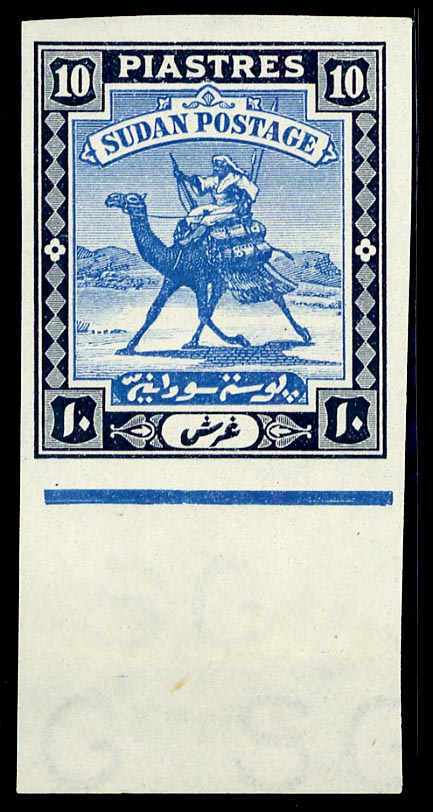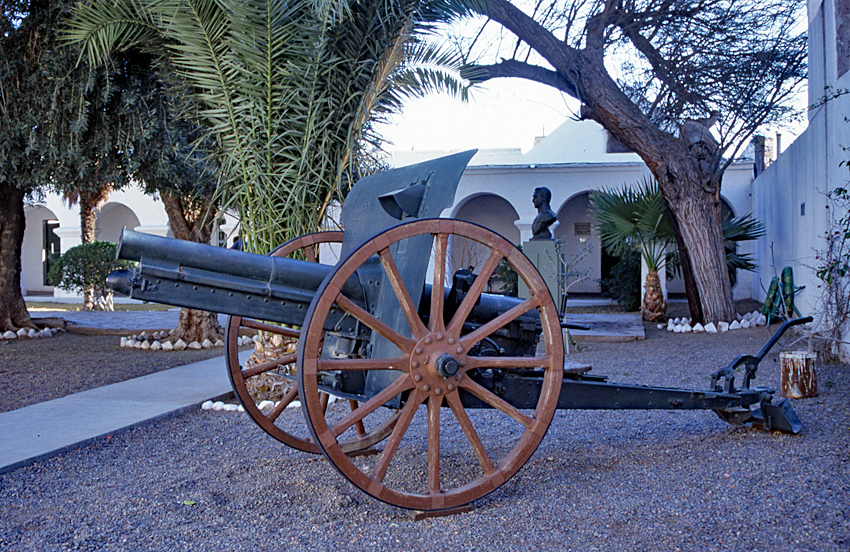|
Battle Of Rejaf
The Battle of Rejaf, or the Battle of Bedden, was fought on 17 February 1897 between the Belgian-led forces of the Congo Free State and Mahdist rebels in South Sudan. The battle resulted in a Congolese victory and the permanent expulsion of the Mahdists from the Lado Enclave, as well as the establishment of a Belgian outpost along the Nile. King Leopold II, the Belgian king and ruler of the Congo Free State, acquired the Lado Enclave in South Sudan from Britain in 1894 as part of a territory exchange which gave the British a strip of land along the eastern Congo for Belgian access to the navigable Nile. However, the territory was overrun with Mahdist rebels who had established their stronghold at the town of Rejaf, which occupied a valuable position for trade along the Nile river. After a wave of new funding from the Belgian government in 1895, King Leopold ordered an expedition to be led into the Lado Enclave to expel the Mahdists and fortify Rejaf as a strategic military a ... [...More Info...] [...Related Items...] OR: [Wikipedia] [Google] [Baidu] |
Mahdist War
The Mahdist War ( ar, الثورة المهدية, ath-Thawra al-Mahdiyya; 1881–1899) was a war between the Mahdist Sudanese of the religious leader Muhammad Ahmad bin Abd Allah, who had proclaimed himself the "Mahdi" of Islam (the "Guided One"), and the forces of the Khedivate of Egypt, initially, and later the forces of Britain. Eighteen years of war resulted in the nominally joint-rule state of the Anglo-Egyptian Sudan (1899–1956), a ''de jure'' condominium of the British Empire and the Kingdom of Egypt in which Britain had ''de facto'' control over the Sudan. The Sudanese launched several unsuccessful invasions of their neighbours, expanding the scale of the conflict to include not only Britain and Egypt but also the Italian Empire, the Congo Free State and the Ethiopian Empire. The British participation in the war is called the Sudan campaign. Other names for this war include the Mahdist Revolt, the Anglo–Sudan War and the Sudanese Mahdist Revolt. Background Foll ... [...More Info...] [...Related Items...] OR: [Wikipedia] [Google] [Baidu] |
Fashoda
Kodok or Kothok ( ar, كودوك), formerly known as Fashoda, is a town in the north-eastern South Sudanese state of Upper Nile State. Kodok is the capital of Shilluk country, formally known as the Shilluk Kingdom. Shilluk had been an independent kingdom for more than sixteen centuries. Fashoda is best known as the place where the British and French nearly went to war in 1898 in the Fashoda Incident. According to Shilluk belief, religion, tradition and constitution, Fashoda serves as the mediating city for the Shilluk King. It is a place where ceremonies and the coronation of each new Shilluk King takes place. For over 500 years, Fashoda was kept hidden and acted as a forbidden city for the Shilluk King, but as modern educations and traditions emerge, Fashoda is now known to the outside world. Fashoda is believed to be a place where the spirit of Juok (God), the spirit of Nyikango (the founder of Shilluk Kingdom and the spiritual leader of Shilluk religion), the spirit of the ... [...More Info...] [...Related Items...] OR: [Wikipedia] [Google] [Baidu] |
Anglo-Egyptian Sudan
Anglo-Egyptian Sudan ( ar, السودان الإنجليزي المصري ') was a condominium of the United Kingdom and Egypt in the Sudans region of northern Africa between 1899 and 1956, corresponding mostly to the territory of present-day Sudan and South Sudan. Legally, sovereignty and administration were shared between both Egypt and the United Kingdom, but in practice the structure of the condominium ensured effective British control over Sudan, with Egypt having limited, local power influence in reality. In the mean time, Egypt itself fell under increasing British influence. Following the Egyptian Revolution of 1952, Egypt pushed for an end to the condominium, and the independence of Sudan. By agreement between Egypt and the United Kingdom in 1953, Sudan was granted independence as the Republic of the Sudan on 1 January 1956. In 2011, the south of Sudan itself became independent as the Republic of South Sudan. In the 19th century, whilst nominally a vassal state of the ... [...More Info...] [...Related Items...] OR: [Wikipedia] [Google] [Baidu] |
Darfur
Darfur ( ; ar, دار فور, Dār Fūr, lit=Realm of the Fur) is a region of western Sudan. ''Dār'' is an Arabic word meaning "home f – the region was named Dardaju ( ar, دار داجو, Dār Dājū, links=no) while ruled by the Daju, who migrated from Meroë , and it was renamed Dartunjur ( ar, دار تنجر, Dār Tunjur, links=no) when the Tunjur ruled the area. Darfur was an independent sultanate for several hundred yearsRichard Cockett Sudan: Darfur and the failure of an African state. 2010. Hobbs the Printers Ltd., Totten, Hampshire. until it was incorporated into Sudan by Anglo-Egyptian forces in 1916. As an administrative region, Darfur is divided into five federal states: Central Darfur, East Darfur, North Darfur, South Darfur and West Darfur. Because of the War in Darfur between Sudanese government forces and the indigenous population, the region has been in a state of humanitarian emergency and genocide since 2003. The factors include religiou ... [...More Info...] [...Related Items...] OR: [Wikipedia] [Google] [Baidu] |
Ali Dinar
Ali Dinar ( ar, علي دينار; 1856 – November 6, 1916) was a Sultan of the Sultanate of Darfur and ruler from the Keira dynasty. In 1898, with the decline of the Mahdists, he managed to regain Darfur's independence. A rebellion led by him in 1915—in the context of his giving his support to the Ottoman Empire during the First World War— led the British government to dispatch the Anglo-Egyptian Darfur Expedition, in which he was killed in action, after which his Sultanate was incorporated into the Anglo-Egyptian Condominium Anglo-Egyptian Sudan ( ar, السودان الإنجليزي المصري ') was a condominium of the United Kingdom and Egypt in the Sudans region of northern Africa between 1899 and 1956, corresponding mostly to the territory of present-day .... Further reading 'Alī Dīnār, Last Sultan of Darfur, 1898–1916 References Entry in the Encyclopædia BritannicaJay Spaulding,Lidwien Kapteijns: ''An Islamic alliance: ʻAlī Dīnār ... [...More Info...] [...Related Items...] OR: [Wikipedia] [Google] [Baidu] |
Gunboat
A gunboat is a naval watercraft designed for the express purpose of carrying one or more guns to bombard coastal targets, as opposed to those military craft designed for naval warfare, or for ferrying troops or supplies. History Pre-steam era In the age of sail, a gunboat was usually a small undecked vessel carrying a single smoothbore cannon in the bow, or just two or three such cannons. A gunboat could carry one or two masts or be oar-powered only, but the single-masted version of about length was most typical. Some types of gunboats carried two cannons, or else mounted a number of swivel guns on the railings. The small gunboat had advantages: if it only carried a single cannon, the boat could manoeuvre in shallow or restricted areas – such as rivers or lakes – where larger ships could sail only with difficulty. The gun that such boats carried could be quite heavy; a 32-pounder for instance. As such boats were cheap and quick to build, naval forces favoured s ... [...More Info...] [...Related Items...] OR: [Wikipedia] [Google] [Baidu] |
Artillery Battery
In military organizations, an artillery battery is a unit or multiple systems of artillery, mortar systems, rocket artillery, multiple rocket launchers, surface-to-surface missiles, ballistic missiles, cruise missiles, etc., so grouped to facilitate better battlefield communication and command and control, as well as to provide dispersion for its constituent gunnery crews and their systems. The term is also used in a naval context to describe groups of guns on warships. Land usage Historically the term "battery" referred to a cluster of cannon in action as a group, either in a temporary field position during a battle or at the siege of a fortress or a city. Such batteries could be a mixture of cannon, howitzer, or mortar types. A siege could involve many batteries at different sites around the besieged place. The term also came to be used for a group of cannon in a fixed fortification, for coastal or frontier defence. During the 18th century "battery" began to be used a ... [...More Info...] [...Related Items...] OR: [Wikipedia] [Google] [Baidu] |
Krupp 75 Mm Field Gun (1897)
The Krupp family (see pronunciation), a prominent 400-year-old German dynasty from Essen, is notable for its production of steel, artillery, ammunition and other armaments. The family business, known as Friedrich Krupp AG (Friedrich Krupp AG Hoesch-Krupp after acquiring Hoesch AG in 1991 and lasting until 1999), was the largest company in Europe at the beginning of the 20th century, and was the premier weapons manufacturer for Germany in both world wars. Starting from the Thirty Years' War until the end of the Second World War, it produced battleships, U-boats, tanks, howitzers, guns, utilities, and hundreds of other commodities. The dynasty began in 1587 when trader Arndt Krupp moved to Essen and joined the merchants' guild. He bought and sold real estate, and became one of the city's richest men. His descendants produced small guns during the Thirty Years' War and eventually acquired fulling mills, coal mines and an iron forge. During the Napoleonic Wars, Friedrich ... [...More Info...] [...Related Items...] OR: [Wikipedia] [Google] [Baidu] |
Krupp Gun
The Krupp gun is a family of artillery pieces that was used by several world armies from the nineteenth century onwards. History In 1811, Friedrich Krupp founded his cast-steel factory ''Gusstahlfabrik'', but it was his son, Alfred Krupp, who attained notable success. The principal characteristic of Krupp guns was that they were made of steel at the time when everyone else still used bronze, cast iron and sometimes wrought iron. Alfred Krupp was introduced to the Bessemer process to mass-produce steel by his London agent and friend, Alfred Longsdon, in 1859-60. After a lengthy period of trial and error, this steel was developed to such quality that the royal factory of Woolwich in England acquired steel from Krupp to manufacture guns that conformed to British naval standards. Also, Krupp was one of the first manufacturers to design practical breechloading guns for army use. In 1856, Fried. Krupp A.G., produced a 9 cm ( 6-Pfünder-Feldkanone C/61) rifled breechloader of cast ste ... [...More Info...] [...Related Items...] OR: [Wikipedia] [Google] [Baidu] |
Zande People
The Azande are an Ubangian ethnic group in Central Africa. They live in the south-central and southwestern part of South Sudan, southeastern Central African Republic, and northeastern parts of the Democratic Republic of the Congo. The Congolese Azande live in Orientale Province along the Uele River; Isiro, Dungu, Kisangani and Duruma. The Central African Azande live in the districts of Rafaï, Bangasu and Obo. The Azande of South Sudan live in Central, Western Equatoria and Western Bahr al-Ghazal States, Yei, Maridi, Yambio, Tombura, Deim Zubeir, Wau Town and Momoi. Zande people are similar to Bantu and their languages are similar to Bantu languages. History The Azande were believed to be formed by a military conquest during the first half of the 18th century. They were led by two dynasties that differed in origin and political strategy. The Vungara clan created most of the political, linguistic, and cultural parts. A non-Zande dynasty, the Bandia, expanded into northern Zai ... [...More Info...] [...Related Items...] OR: [Wikipedia] [Google] [Baidu] |
The American Museum Journal (c1900-(1918)) (18161947791)
''The'' () is a grammatical article in English, denoting persons or things already mentioned, under discussion, implied or otherwise presumed familiar to listeners, readers, or speakers. It is the definite article in English. ''The'' is the most frequently used word in the English language; studies and analyses of texts have found it to account for seven percent of all printed English-language words. It is derived from gendered articles in Old English which combined in Middle English and now has a single form used with pronouns of any gender. The word can be used with both singular and plural nouns, and with a noun that starts with any letter. This is different from many other languages, which have different forms of the definite article for different genders or numbers. Pronunciation In most dialects, "the" is pronounced as (with the voiced dental fricative followed by a schwa) when followed by a consonant sound, and as (homophone of pronoun ''thee'') when followed by a ... [...More Info...] [...Related Items...] OR: [Wikipedia] [Google] [Baidu] |
.jpg)








.png)